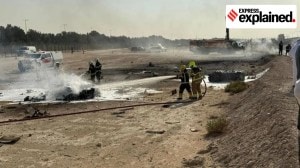Himachal shows the financial inclusion way: each household in state has a bank account
The Sensex may have risen to record levels, growth may be at an all-time high but a majority of Indians are still off the financial services map...

The Sensex may have risen to record levels, growth may be at an all-time high but a majority of Indians are still off the financial services map — as per RBI figures, just about half of the adult population has a bank account and, in villages, this falls to a quarter.
Himachal Pradesh, however, is showing the way to financial inclusion: it has now become the first “fully banked” state.
The state has a population of about 60 lakh — around 12 lakh households — and at least one member of each household is a bank customer. This works out to one bank for every five thousand people, three times the national average.
Union Minister of State for Finance Pawan Bansal explains how this turnaround happened: “We came up with a concept of no-frills account. This requires minimum formalities and in some cases we opened bank accounts with amounts as low as Rs 10. The idea is to give the poor and the unempowered access to banking, affordable credit and financial literacy.”
The responsibility for overseeing the total financial inclusion of a district is given to the bank which has the most dominant presence in that particular district.
Unlike European nations where financial inclusion merely involves opening of a bank account, in India this term also includes issue of General Credit Cards (GCCs). “A General Credit Card doesn’t have any collateral. Depending upon the situation, the limits of each credit card is determined, with the maximum up to Rs 25,000,” says R K Tandon, General Manager, RBI Chandigarh.
Access to formal credit is especially significant for rural India as its absence makes farmers prone to moneylenders and their vicious debt traps.
One instance is Punjab, where loans taken from local moneylenders are worth Rs 12,000-13,000 crore. The rate of interest on these is sometimes as high as 30 per cent. Recognising this problem, the RBI initiated its financial inclusion scheme in the Malwa region. In fact, two districts, Gurdaspur and Mansa, achieved cent per cent financial inclusion two days ago.
The central bank is keen to replicate Himachal’s success in other states. Talks are on with the governments of Uttarakhand, Chhattisgarh and Northeastern states where only 20 per cent of the adult population has bank accounts.
“The Government of Andhra Pradesh has given its assent to this scheme. Similarly, work shall shortly be started in 16 districts of Haryana,” says Bansal.
He adds that the Prime Minister himself is closely monitoring progress on this front.
“There are a lot of challenges like lack of literacy, large distances, difficult terrain, apprehensions about opening an account and fears of running into debt. But these have to be overcome. Moreover, once you are successful in ensuring complete financial inclusion, there is an immense scope to provide further services,” says Tandon.
- 01
- 02
- 03
- 04
- 05































